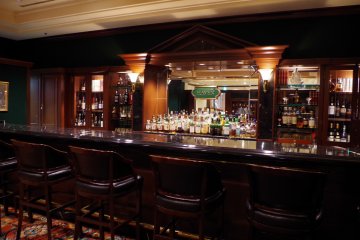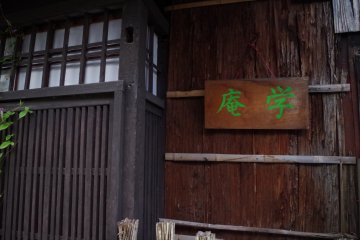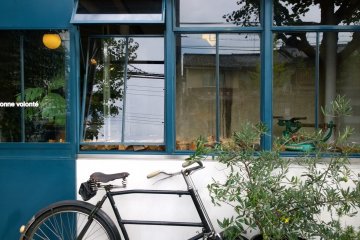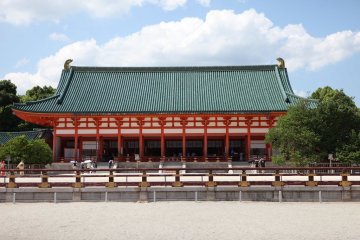
เกียวโต: Gyoen Garden ในฤดูใบไม้ผลิ
Tomoko Kamishimaสวน Gyoen Garden ที่เกียวโตในฤดูใบไม้ผลิ สวนที่เต็มไปด้วยซากุระบานสะพรั่งซึ่งเคยเป็นที่พักอาศัยของครอบครัว Konoe-tei

Located in the heart of the city, Kyoto Gyoen National Garden is a natural oasis perfect for escaping the busyness of urban life. This vast green space surrounds the Kyoto Imperial Palace and Kyoto Sento Imperial Palace and was designated as a national garden in 1949.
The garden is open all day, everyday, and free to enter. Enjoy the beautifully landscaped trails and seasonal flowers, such as cherry blossoms, wisterias, plums, and lilies, or bring a blanket and have a picnic on the lush grass. Given the garden’s abundance of nature, it is a popular place for tourists and residents alike and is always filled with joggers, dog walkers, picnickers, and cyclists. The greenspace also has athletic facilities.
Aside from its natural beauty, the garden is also home to numerous historical and traditional buildings. Of course, the garden’s most treasured structure is the Kyoto Imperial Palace. The imperial palace was home to Japan’s emperors until the Meiji Restoration, when Japan’s capital moved from Kyoto to Tokyo. Today, the campus offers us a glimpse into the past with its historic halls, traditional designs, opulent decor, vermillion accents, residences, and more. You can visit the palace year-round.
The Kyoto Sento Imperial Palace, which served as the palace for former emperors, is also available to tour. Apply for tickets online in advance or obtain walk-in tickets (please note that walk-in tickets are limited). The tour features an hour-long stroll through the palace’s immaculate gardens.
Kyoto Gyoen is also the site of Shu Sui Tei Teahouse where you can experience tea ceremonies for 100 yen per person, the Kaninnomiya Residence, and numerous smaller shrines.
Go on a leisurely walk and enjoy the combination of idyllic nature and historic learning.
From Kyoto Station, take the Karasuma Subway Line to Marutamachi Station (7 mins) or Imadegawa Station (9 mins). From either station, the walk is about 10 minutes to the garden’s west entrance.

สวน Gyoen Garden ที่เกียวโตในฤดูใบไม้ผลิ สวนที่เต็มไปด้วยซากุระบานสะพรั่งซึ่งเคยเป็นที่พักอาศัยของครอบครัว Konoe-tei

The Kyoto Imperial Palace is the former ruling palace of the Emperor of Japan. Since the Meiji Restoration in 1869, the Emperors have resided at the Tokyo Imperial Palace, while the preservation of...

การตั้งอยู่เหนือถนนหลักของเกียวโตทำให้สามารถชมวิวงานเทศกาลรอบเมืองได้

ใช้ชีวิตเหมือนขุนนางยุคเอโดะที่ไคโคอันในโอกาซากิ ฮิกะชิยะมะ เกียวโต

ปล่อยใจตัวเองไปกับโรงแรมบูติคแบบอาร์ตเดโคในใจกลางเมืองเกียวโตแห่งนี้ ใครจะเคยคิดว่าศิลปะอาร์ตเดโคและรินปะจะผสมผสานกันได้อย่างลงตัว?

bonne volonté เสน่ห์ของเบเกอร์รี่เกียวโตที่ทำจากยีสต์ธรรมชาติ

ประสบการณ์การดื่มชาตามแบบฉบับญี่ปุ่นที่แท้จริงที่ร้านชาอายุสามร้อยปี

เสิร์ฟก๋วยเตี่ยวอุด้งโซบะและชามข้าวมากกว่า 500 ปีสำหรับนักเดินทางทุกคนและทุกฤดูกาล

Nijo Castle is one of the most accessible UNESCO spots in Kyoto, being just a short walk from Nijojo-mae Station. The former residence of the Tokugawa shoguns, the sprawling castle grounds are surrounded by a wide moat and massive stone walls. Spanning over 275,000 square metres, Nijo Castle is one of the biggest historic sites in all of Kyoto. Established in 1626, Nijo Castle was built by a combined effort from all the feudal lords in Western Japan at the time. Since then, multiple buildings have been damaged by fires or storms, and extra effort is taken by the city to preserve and restore this cultural site. Nijo Castle is designated as a Historic Monument of Ancient Kyoto, making it one of the prefecture's most significant sites. Within the castle grounds is Ninomaru Palace, a 3,300-square meter complex made almost completely out of Hinoki cypress wood. The palace interior is adorned with gold leaf-plated decor and exquisite wood carvings, making it a fitting place to entertain powerful political visitors during the shogunate's ruling period.

The Kamo Shrines, Shimogamo Shrine and Kamigamo Shrine are both recognized as UNESCO World Heritage Sites. They are two of the most important and oldest shrines in Kyoto. They are located in the north of the city and are intentionally placed to ward off evil and Protect the city In fact, the two Kamo shrines are even older than the city, which became the national capital in 794. Shimogamo Shrine is located at the confluence of the Takano and Kamo Rivers and is surrounded by a forest that contains trees up to 600 years old. The Kamigamo Shrine is about three and a half kilometers upstream and is known for two sand cones on its site, which have a cleaning function for the sanctuary and have been ritually made since ancient times. Together the shrines host one of Kyoto's three biggest festivals, the Aoi Matsuri, which takes place on May 15th.

The Heian Shrine is a Shinto shrine located in Sakyō-ku, Kyoto, Japan. The Shrine is ranked as a Beppyō Jinja by the Association of Shinto Shrines. It is listed as an important cultural property of Japan. [Wikipedia]